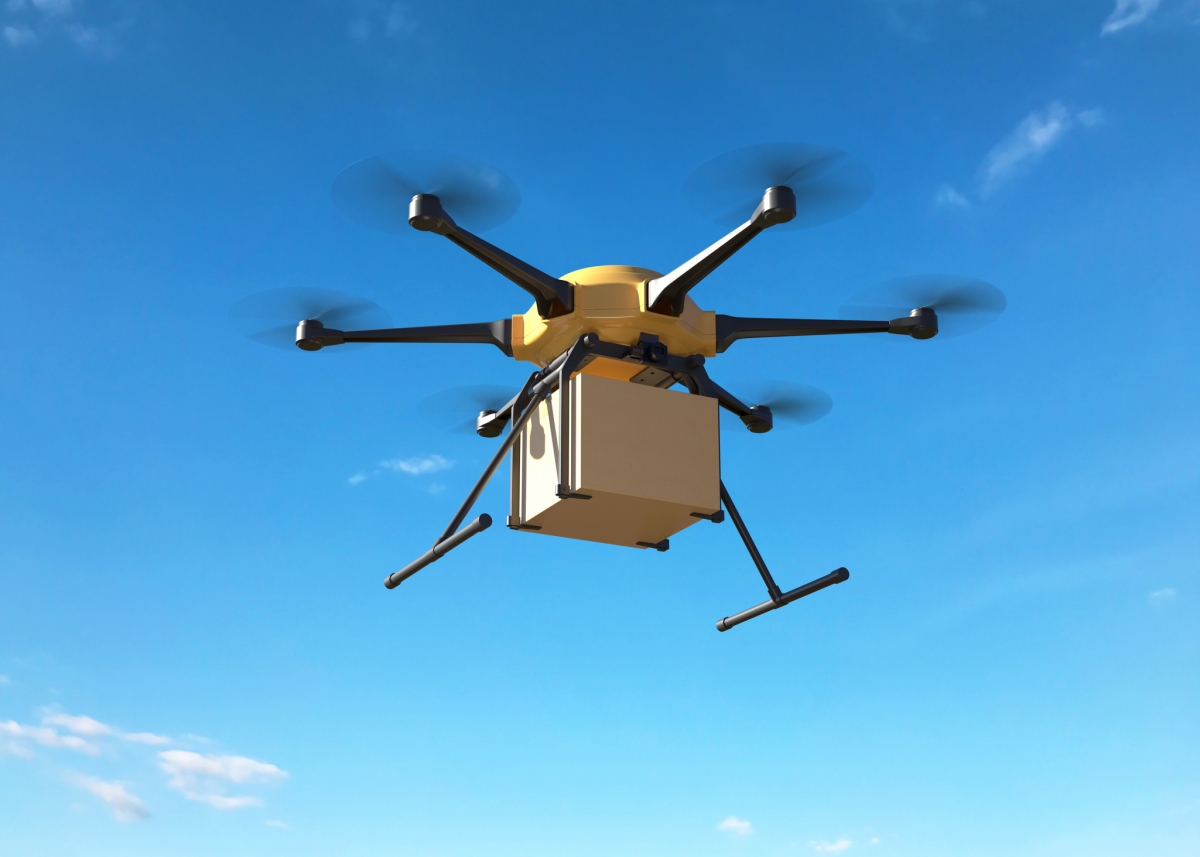
September 25, 2020
By: RULA IFTEIHA
CONTENT SPECIALIST

Picture this: You’re tracking your package on your phone, eagerly waiting outside your door for the arrival of your online order. You look up at the sky, and there, trickling closer and closer to you, is your package — by way of a drone.
Drone deliveries have been on the horizon for years, and recent trials by major retailers have launched these once fantastical robotics devices into the realm of reality. While the concept of drone delivery is both an exciting and revolutionary one for customers and fleet managers, truck drivers and logistics employees may worry that drones pose a potential risk to the security of their jobs — but do they?
Upsides and downsides to drone delivery
Not only do delivery drones help reduce the carbon footprint brought on by excess fuel, but they can reach areas that commercial vehicles are unable to drive through. These capabilities can prove very beneficial for bottom-line costs, customer expansion in previously hard-to-reach areas, and even the environment.
And yet, delivery drones are still substantially limited by weight restrictions, package sizes, and the infrastructural complexities of urban areas, to name a few examples. Moreover, their limitations don’t even begin to account for other restrictions. Can drones be trusted with fragile or expensive packages? How do you keep them safe from onlookers who may anticipate them as a threat? And what of satellites and heavily-wired areas that could jeopardize the delivery drone altogether?
With these restrictions in mind, it’s evident that a delivery drone can’t take the place of the beloved truck driver. What it can do, however, is serve as a tech-savvy assistant.
Drones can provide assistance, but they can’t replace truck drivers
A recent study found that 70 percent of consumers would rather speak to a human customer service representative than engage with a chatbot or virtual or digital customer service representative. Drones may not outwardly appear as customer service representatives, but they are delivering a service to customers when they deliver packages.
Additionally, a Pew Recent Center survey asked a group of Americans what their beliefs were on personal and commercial drones being permitted to fly through U.S. airspace. A whopping 63 percent of the Americans surveyed said they thought operating with drones would be a change for the worse. This number reflects the adjustment period that will be required for consumers to grow increasingly comfortable with this system of technology.
Technology is no substitute for trust, exceptional customer service, and relationship building that can flourish with human-to-human interaction.
Prepare your operation for success in the last mile
While many companies are still a considerable amount of time away from using delivery drones, staying in the know is key to preparing your operation for the future. It would be best if you considered several factors when contemplating investing in last-mile technologies, like drones.
One pertinent area to contemplate is which customers from your customer base may be more receptive to these technologies. Additionally, you will want to weigh your potential ROI. In the case of delivery drones, what would be the cost of investing in this technology, what kind of packages could they transport, and how much will you likely profit from the benefits drones bring, like saved fuel and additional customers in previously inaccessible areas?
Keep tuning in to our Road Ahead Blog for the most pertinent industry topics. In the meantime, read more about possible future trends in last-mile delivery.